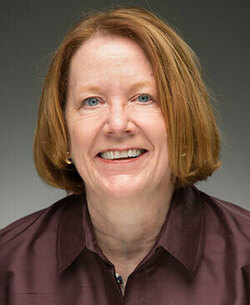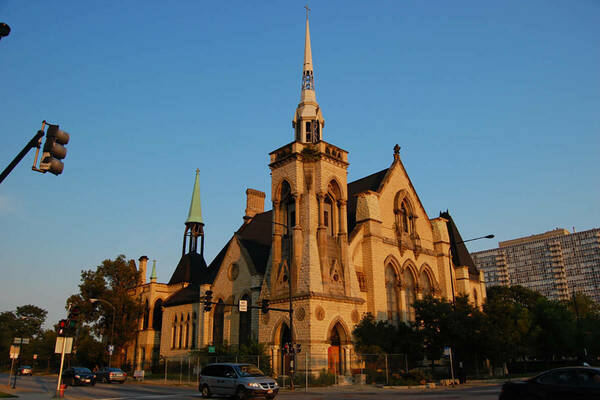
University of Notre Dame theology and psychology professors are using science and technology to understand how people respond to sacred art.
Robin Jensen, James Brockmole, and G.A. Radvansky received a nearly $1 million grant award from the Templeton Religion Trust for five related research studies that assess sacred art’s impact on viewers’ individual experiences, memories, and spiritual understanding.
The grant will help the research team expand upon research done thanks to a previous award from Templeton. In 2020, the interdisciplinary trio began exploring ways in which looking at sacred art informed and enhanced spiritual growth and whether that changed based on time and place.

In that initial study, they learned that the time and the place in which people view sacred art — such as whether it’s Christmas Eve at St. Peter’s Basilica in Vatican City or July in a casino in Las Vegas — did indeed affect their experience.
They also learned that what viewers bring with them in terms of knowledge, experience, and attitude matters.
Understanding how and why sacred art shapes people’s theology, faith, and prayer life can be beneficial to artists, spiritual leaders, and museum curators, said Jensen, the Patrick O'Brien Professor in the Department of Theology and the project’s director.
People’s spiritual lives are often formed and enhanced by their sensory experiences in their place of worship, she said. In a Catholic church, for instance, worshipers hear homilies and organ music, smell incense and Easter lilies, and see stained glass windows or crucifixes.
“And sometimes, much to our impoverishment, people who plan worship don’t think enough about the visuals,” said Jensen, who studies early Christian art and archeology.
“By tying together the threads of perception, attention, memory, understanding, and spirituality, I think we will gain exciting insights into the ways people engage and use art in their secular and religious lives.”

The Notre Dame research team, however, is focused on the visuals. And it will use virtual reality, eye-tracking technology, and surveys to glean insight into people’s experiences with and responses to sacred art.
In the three distinct virtual reality spaces — a chapel, a warehouse, and a museum — study participants will view the same sacred art pieces as well as a control set of secular pieces.
Jensen envisions the virtual chapel, for instance, will have a vaulted ceiling, stained glass windows, an altar, and a singing choir. And the warehouse will have a girded ceiling, louvered windows, a supervisor’s desk, and a forklift beeping as it backs up.
Brockmole, the Joseph and Elizabeth Robbie College Professor of Psychology and the College of Arts & Letters’ associate dean for research and strategic initiatives, will use eye-tracking tools to learn about people’s visual attention, perception and cognitive processes.
The vision scientist, who for 20 years has studied how people see the world as it is, said the project is exciting because it offers a way to explore how people perceive and understand the world as it could be.
“Art offers a nearly endless means to portray our physical and psychological worlds. But, how are we affected by art? When, where, and how does art draw our attention, change the way we look at the world, become or evoke a memory, inspire a novel thought, or change a perspective?” he asked.
“By tying together the threads of perception, attention, memory, understanding, and spirituality, I think we will gain exciting insights into the ways people engage and use art in their secular and religious lives.”
Radvansky, a professor of psychology, will explore how images impact people’s memory differently than text and other types of knowledge sources.
Jensen was inspired to explore these questions when she began wondering what people gained or lost when looking at sacred art in places of worship versus museums. An image of Jesus, Mary, or Buddha might prompt a person to have a devotional response in a place of worship, she said, but would it elicit the same response in a museum?
Her curiosity coincided with the University’s building of the Raclin Murphy Museum of Art, a 132,000-square-foot complex with galleries, teaching spaces, a chapel, atrium, café, and retail space to be completed in fall 2023. This second, three-year study will include an interdisciplinary symposium and special visitor engagement booklets for select sacred art objects at the museum.
The team will examine how people emotionally respond to the art; what their behavior indicates about their cognition, spiritual impact, or depth of engagement; and if their understanding and engagement vary according to their education, gender, age, identity, or religious affiliation.
The researchers also will explore whether the season and place affect how viewers engage with the art, and if there are differences in how they engage with sacred versus secular art.
“To work with scientists on questions like this is very eye-opening,” Jensen said.


